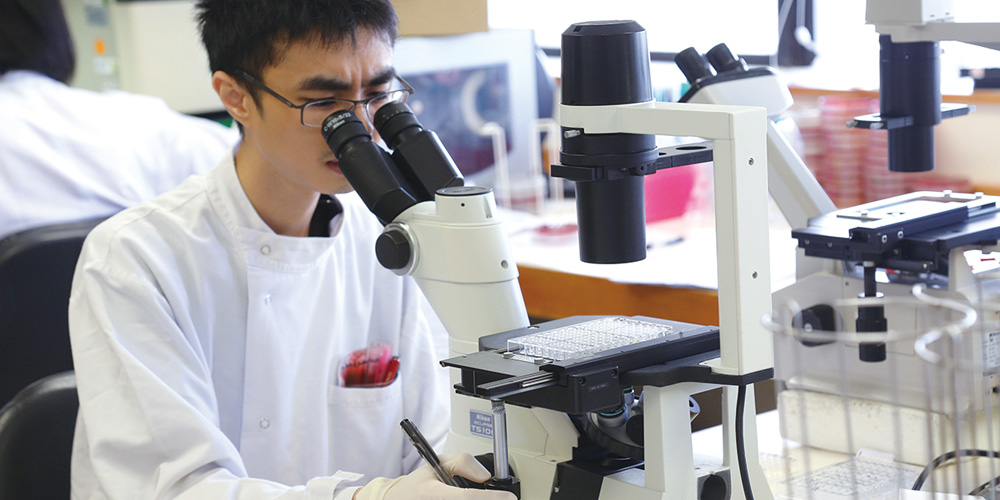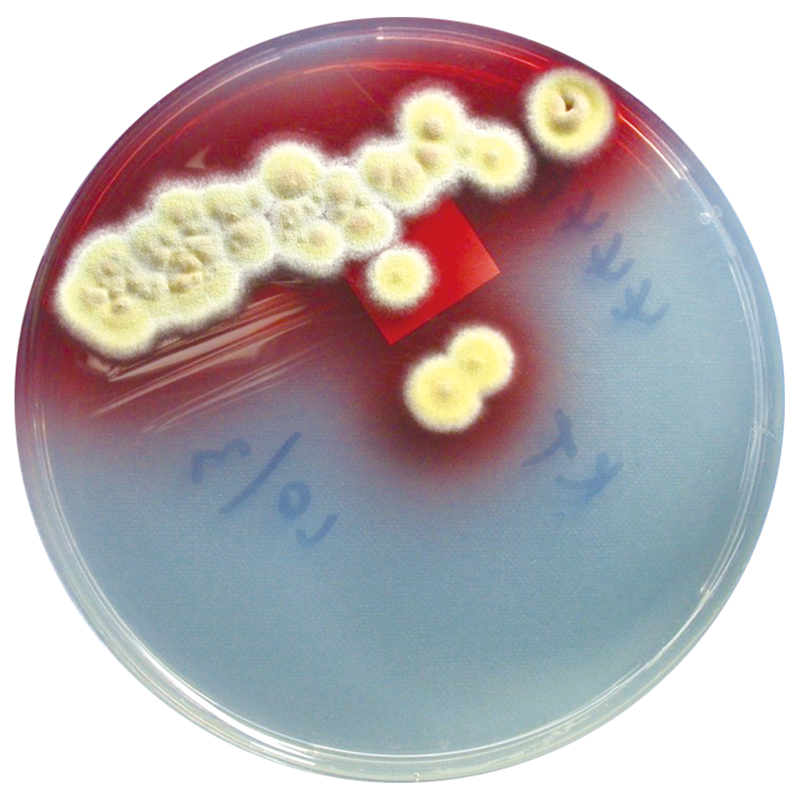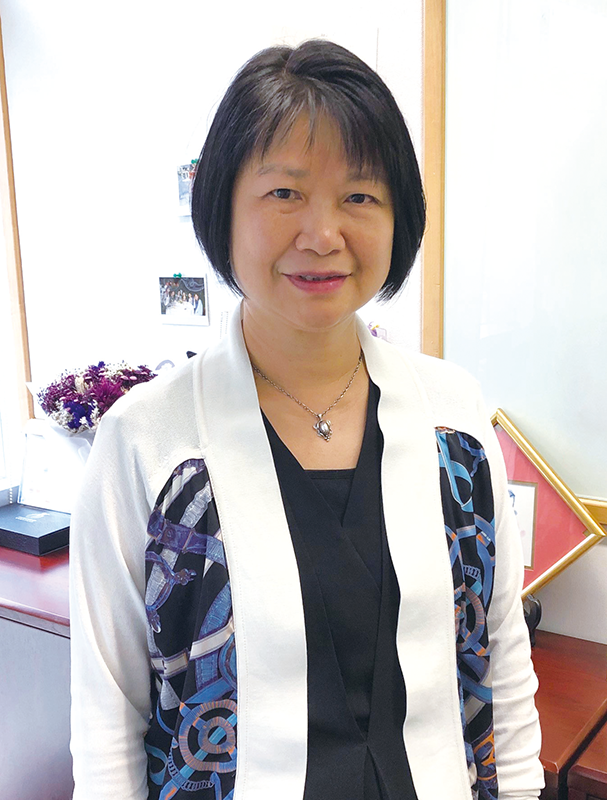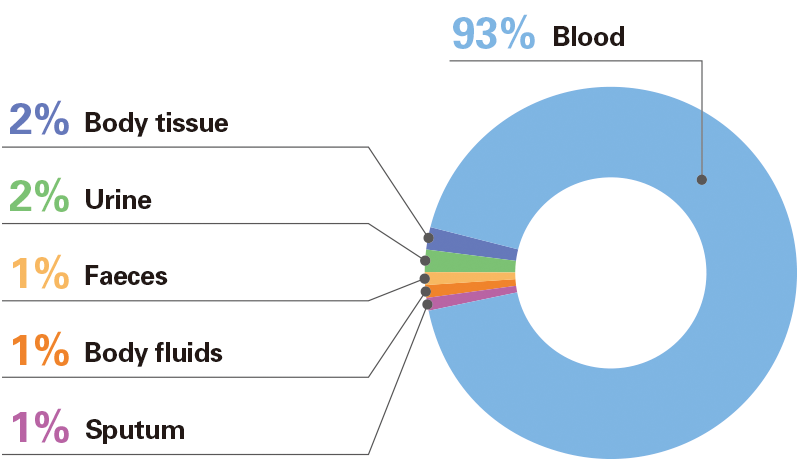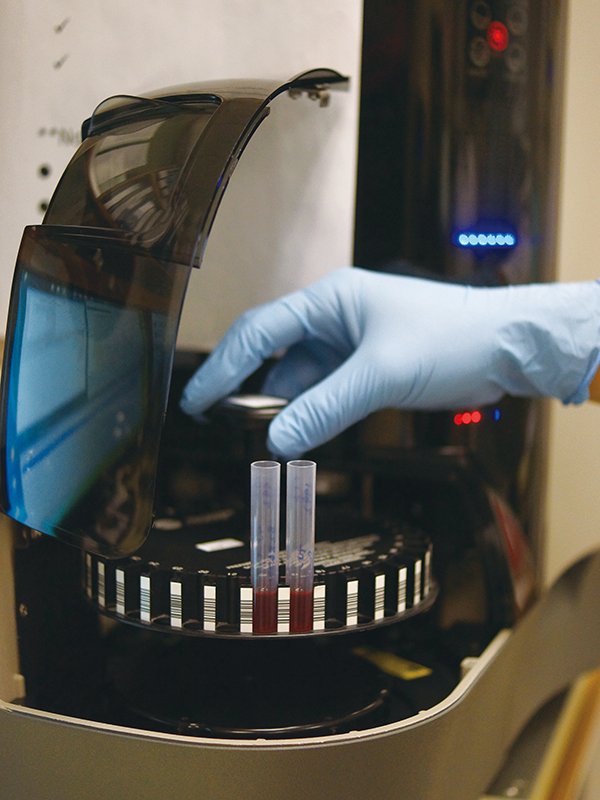The revelation of specimen:
From disease prevention to effective cures
They are the unseen heroes in Hong Kong’s battles against diseases – a team of dedicated medical technologists (MTs) who are detectives behind-the-scenes to hunt down clues that help our frontline medical teams keep the city safe from outbreaks ranging from avian flu, swine flu, lead in drinking water, to SARS. They conduct medical tests on body fluids and tissue samples, as well as painstaking investigations that help clinicians diagnose, monitor, treat, and control the progress of diseases.
Hong Kong has around 3,600 registered MTs, nearly half of them, around 1,600, work for the Hospital Authority (HA) which employs the largest group of these allied health professionals. Chief Manager of Allied Health Ivis Chung tells HASLink that the HA’s team of MTs conducts 42 million medical tests a year on body fluids and tissue. “Demand for MTs is rising and their work is becoming more complex as Hong Kong’s ageing population leads to an increase in chronic diseases and infection diseases, and use of targeted therapy,” adds Ivis.
MTs and pathologists work closely together. The vital work of MTs is conducted in the Pathology Department of public hospitals and covers four main subspecialities: medical microbiology and virology, haematology and blood transfusion science, histology and cytopathology, and clinical chemistry. Although the testing methods and equipment used by MTs of different subspecialities are different, they work with the same core mission – to ensure that every step in every process is accurate. A single misstep can lead to incorrect diagnosis and wrong drug prescription for patient, and the cost may be re-do of surgery or even life.
In an age when society and technology are progressing rapidly, MTs have to keep pace with scientific innovation and medical advances. The HA’s Institute of Advanced Allied Health Studies offers MTs a variety of on-the-job training opportunities. “Associate MTs are on job rotation of different aspects of laboratory service in the first three years of employment to gain as much exposure as possible. For MTs and Senior MTs, training focuses on the latest development of pathology, laboratory management, equipment purchase, quality control, and human resources management,” Ivis explains. “Attachment training at HA Head Office or overseas is also available to enrich their professional knowledge so that they can work to their best ability and offer the most accurate test results to clinicians.”
Types of specimen
Laboratory jargons
Fishing
Taking out slides of tissue vertically from a waterbath.
Capturing fish
Manually double-checking ‘prothrombin time’. It evaluates whether a patient has deficiency in certain clotting factor that might result in abnormal bleeding.
Faeces stall and urine stall
The locations where faeces and urine samples are tested.
Machine-beating
Putting samples into a testing device.
● Meet the ‘Watsons’ at laboratory
COVER STORY
● The revelation of specimen: From disease prevention to effective cures
● Microbes: Stop microbe transmission with speedy identification
● Blood: Decode the secret of health from blood
● Cells and tissue: Tell malignancy from 20-minute test
● Chemical substances: Chemical substances shed light on therapeutic results
WHAT'S NEW
● Locum scheme create all-win situation
● Geneticist: Nothing ventured, nothing gained
● Add human touch to HA numbers game
● Your views count in streamlining management processes!
HELEN HA
● Work arrangement under ‘extreme condition’
● New eRecruitment system makes job search in HA easy and fast
FEATURE
● Turn stress into motivation: PPCI connects
● Service extension benefits more patients
● The heart of sterile supplies
● How are special devices washed?
STAFF CORNER
● Professor John Leong Chi-yan awarded Gold Bauhinia Star

